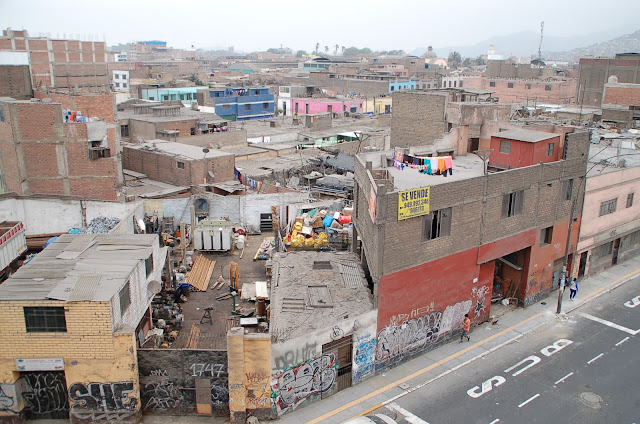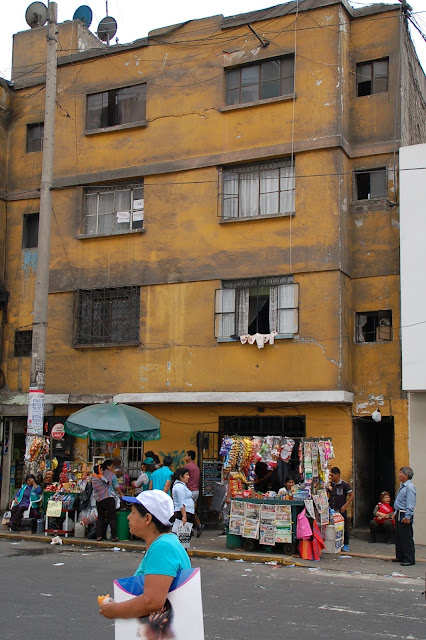Lima is
divided into 43 districts, of which 30 are considered the City of Lima. Each
district is huge, with 200,000–400,000 inhabitants. That means there are actually 30 different
Limas, each with their own centres, characteristics, and levels of cleanliness
and security. The everyday life happens within one's own district; people are
not necessarily familiar with the other areas. The population of the whole city
is almost eight million.
What is
common to all the different neighbourhoods is that the buildings are low,
mostly two or three storeys high. Only near the Pacific shore are there
luxurious high-risers. The whole city looks like it's grown on its own account,
spreading in different directions, with buildings of varying height and width
having been built in a haphazard manner where ever there was space.
The only
planning that seems to have gone into how to city is structured is the planning
for cars. Everywhere, the neighbourhoods are cut with massive, noisy avenues
with six or more lanes. It's still not enough: all the lanes are always full of
cars, the air filled with exhaust smoke and the sound of constant honking of
the horns. In the midst of all this there are people, stepping in an out of
small buses, doing their shopping at the fruit stands in the corners, going on
about their life.
"Excessive playing causes gambling addiction" – but to me, ludopatía first sounded like something even more horrendous...!
Looking
from afar, the buildings spreading into the horizon resemble sinister, square
creatures with ghost-like eyes. It's
because the windows are mostly darkened and thus often look like there
are no window panes, only holes. Only after looking closer in some poorer areas
I realised that some of them indeed have no glass.
The colour
of Lima is dirty white. It's not just the buildings that are mostly some shade
of white; it's also that the sky is overcast much of the time. The climate of
Lima is pleasant – it's usually between 20 and 26 degrees Celsius – but the sky
is often covered with clouds. The pollution must have something to do with it,
but I was also given another explanation: The bordering sea is so cold that,
hitting the warm air of Lima, it always creates new clouds.



















































